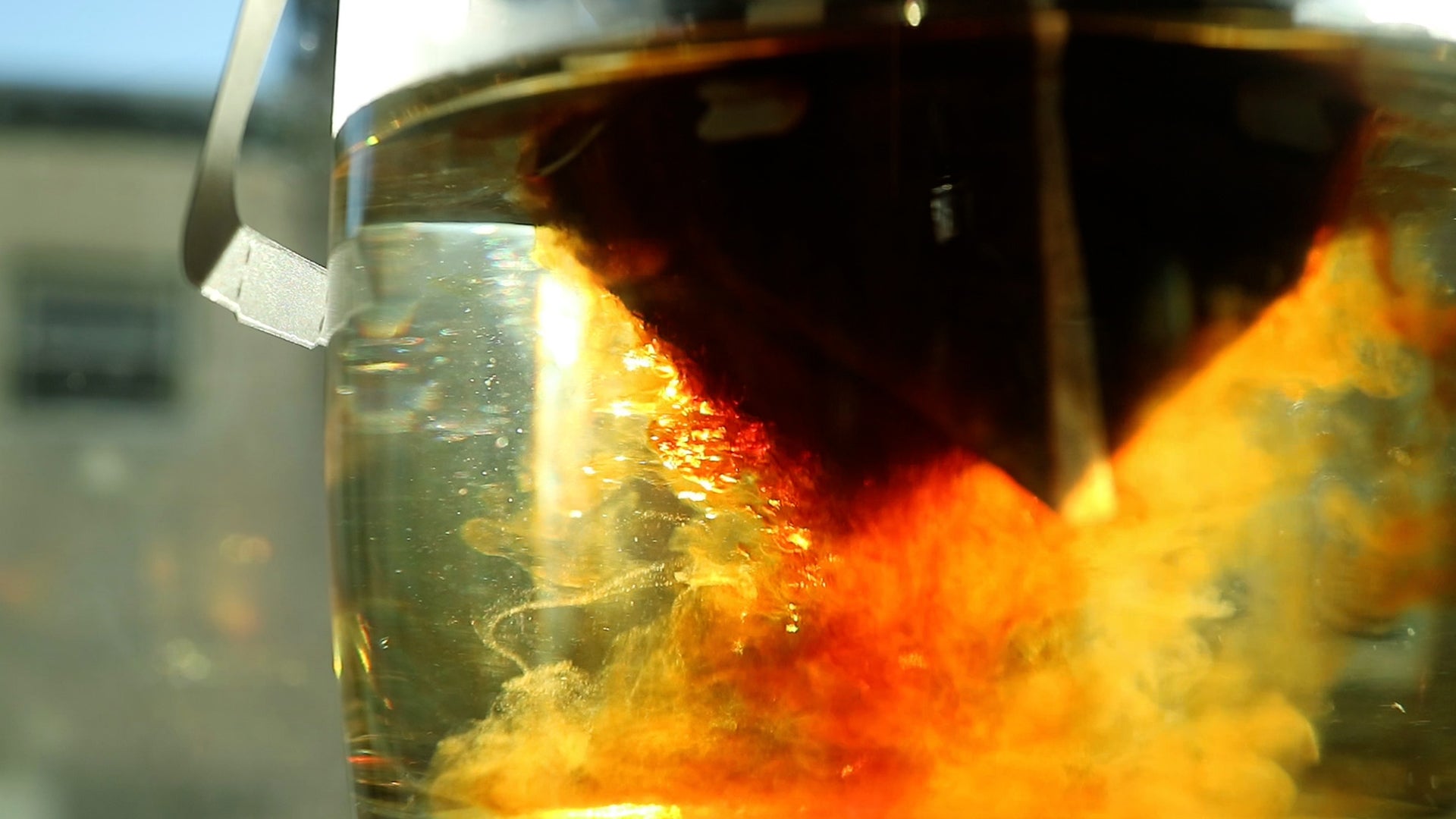About 98% of your coffee is water. So while It may seem trivial to think about water in relation to your coffee, the quality of your water actually has a huge impact on the quality of your brew. Today, we will geek out on the water science for brewing coffee, what you can do to understand your specific water condition and how you can tailor your water to compliment your brew.
All water is NOT the same
Water is H2O. Intuitively, we often think water is all the same. However, based on where you are, the water that comes out from your tap may not always taste the same. That’s because in this seemingly clear and clean water, whether it’s from underground or city water, there’s mineral, chloride even organic matter that all affect how your water tastes and its PH level. In some cases, the water directly from your tap might not be safe for consumption.
Did you notice your glasses have more visible water stains? Does your water smell like bleach? Does your humidifier experience frequent build-up? Does your coffee always kind of taste the same, and the acidity is not always well defined? If the answer is yes to any of the above questions, maybe it’s time to take a closer look at your water.
To start, you can get a DRINKING WATER TEST KIT to see how the water in your home is doing. These kits often include single-use test strips/vials to test the presence of matters in your water, from bacteria and animal waste to chlorine and water hardness. These kits are a great and affordable way to determine if you need to call in a specialist for water treatment. This is an important step as unsafe water is harmful to drink. It can cause detrimental health issues, and the coffee brewed with questionable water is guaranteed not to taste good.

WATER STANDARD
Now that we’ve tested if the water is safe for drinking, how should we further determine water quality? Two of the most easily identifying factors are through PH level and water hardness.
PH level reveals the acidity/alkaline level of your water. It ranges from 0 to 14. When the PH level is less than 7, it indicates acidity. The lower the PH, the more acidic it is, and is more corrosive in turn. Low PH water can dissolve metal over time, causing leaks and damages to appliances in your household. Distilled water is slightly acidic and is not recommended for coffee brewing.
When the water has the PH level higher than 7, it’s alkaline. Some claim alkaline water with a PH of 8 and 9 is beneficial for your health, and can help neutralize the acid in your body. Some enthusiasts argue using alkaline water to brew coffee can reduce the acidity in the brew and end up tasting better. It is also suggested to be less irritating for people with sensitive digestive systems or irritable bowel syndrome (IBS).
Water hardness is the amount of dissolved calcium and magnesium in the water. It is often measured by ppm (parts per million) or mg/L. Alternatively, some people use GPG (grains per gallon) which can be calculated by dividing ppm by 17.1. According to USGS, water hardness between 0 to 60 mg/L (milligrams per liter) as calcium carbonate is classified as soft; 61 to 120 mg/L as moderately hard; 121 to 180 mg/L as hard; and more than 180 mg/L as very hard.
When the water is hard, it generally means the water has too many minerals. Untreated hard water can cause serious calcification on surfaces and troublesome scaling inside your appliances, especially heating elements in direct contact with water.
The Specialty Coffee Association of America published its water for brewing specialty coffee standard in 2009. An acceptable PH level range is from 6.5 to 7.5 with a water hardness ranging from 75 to 250 ppm.

WATER CUSTOMIZATION
In this section, we are focusing on using distilled water and remineralizing it with magnesium and calcium to create our ideal water for coffee.
Most households see great improvement on water quality with a simple water filter. However, in some cases, a simple filter is not sufficient enough to correct water conditions. Furthermore, even if it manages to get water hardness within the ideal range it is difficult to achieve repeated results over time.
A more precise and customizable way is to remineralize distilled water to achieve a consistent PH level and water hardness. As we mentioned before, distilled water is acidic and the addition of minerals helps to improve coffee extraction. By adding minerals back to the distilled water, we can manipulate water quality to enhance certain flavors in the coffee to achieve optimum and repeatable extraction.
To make your own tailored water, you will need:
. baking soda
. food grade epsom salt
. gypsum powder
. distilled water
. scale
. 3 water jars with lids (about 18 oz)

STEP 1: MIX BUFFER AND SOLUTION
We are making three different solutions:
1) buffer: mix 499g of distilled water with 1g of baking soda.
2) magnesium sulfate: mix 495g of distilled water with 5g of food grade epsom salt.
3) calcium sulfate: mix 499g of distilled water with 1g of gypsum powder. (gypsum powder is harder to dissolve, allow ample time and apply more aggressive incorporation)
STEP 2: CUSTOMIZATION
We use sodium bicarbonate to effectively manipulate the PH level of water. We use magnesium sulfate and calcium sulfate to achieve ideal water hardness. The ratio of magnesium and calcium is where you can experiment and fine tune your very own water recipe. Magnesium sulfate is very good at encouraging texture and sweetness; whereas calcium sulfate can definitely enhance the vibrancy in the cup. We like to use both to compliment each other. In our experiment, coffee brewed with water remineralized with 100% magnesium can sometimes taste too intense, while a straight calcium recipe actually starts to taste chalky.
Here are some water recipes for our past brew guides:
. Aeropress (https://bkgcoffee.com/blogs/brew-guide/bkg-brew-guide-how-to-make-the-perfect-aeropress): 3g of buffer, 5g of magnesium solution, 11g of calcium solution, 281g of distilled water
. moka pot (1cup)(https://bkgcoffee.com/blogs/brew-guide/bkg-brew-guide-how-to-make-the-perfect-moka-pot): 1g of buffer, 2g of magnesium solution, 5g of calcium solution, 142g of distilled water
. cold brew (https://bkgcoffee.com/blogs/brew-guide/bkg-brew-guide-how-to-make-the-perfect-cold-brew): 10g of buffer, 30g of magnesium solution, 58g of calcium solution, 1302g of distilled water
. pour over (https://bkgcoffee.com/blogs/brew-guide/bkg-brew-guide-how-to-make-the-perfect-pour-over): 6.5g of buffer, 10g of magnesium solution, 20g of calcium solution, 463.5g of distilled water
STEP 3: IMPROVE YOUR RECIPE
We prefer different water hardness for different brewing methods. We also tend to keep the magnesium and calcium ratio to 2:1. We suggest you use our recipes as your starting guide, but improve your recipe based on your sensual evaluation. If you want to enhance more body and sweetness, we find a good direction is to increase magnesium content. On the other hand, different calcium levels may change the quality of the acidity. For example, an acidity that reminds you of citrus might taste more like a stone fruit at a different calcium level.
Be creative and try different combinations. However, be sure to remember when you reduce magnesium it will reduce the water hardness. So when you make any drastic changes, we recommend that you compensate the decrease of one solution with the increase of the other, or vice versa. And since magnesium solution and calcium solution don’t affect hardness equally, we suggest increasing calcium solution by 4 to 5 parts when reducing by 1 part magnesium solution. Or if you reduce 1 part of calcium solution, you should compensate that by adding 1/4 to 1/5 part of magnesium.

HAPPY BREWING
We hope we provided you with some motivation to break out your high school lab tools and give our water recipes a try. Coffee is an extensive science fueled by the passion in pursuit of the perfect brew. Water composition is an important part of your coffee extraction. We hope we provide you with some information that helps to elevate your coffee game. Let us know if you think this subject is useful. Are you interested in similar topics? And if you customize your water already, what’s your secret ingredient?


